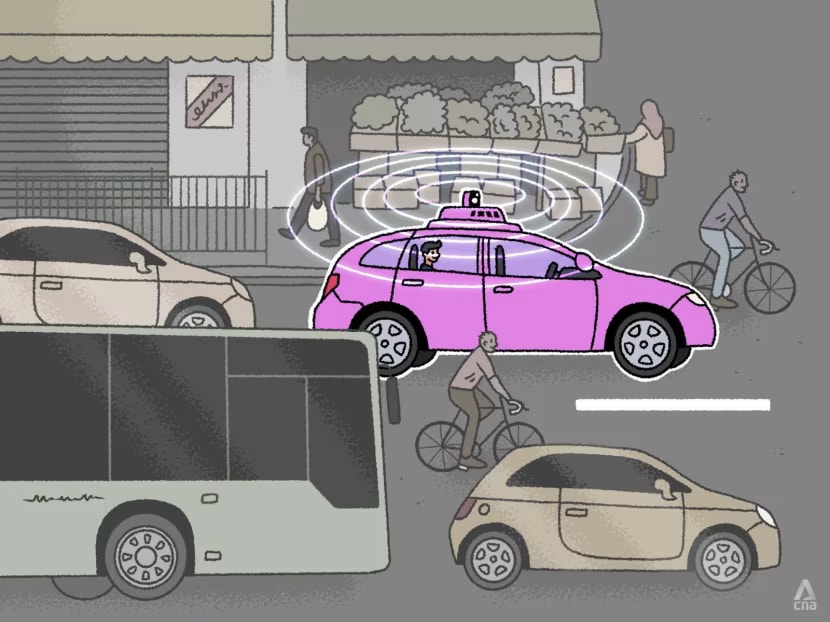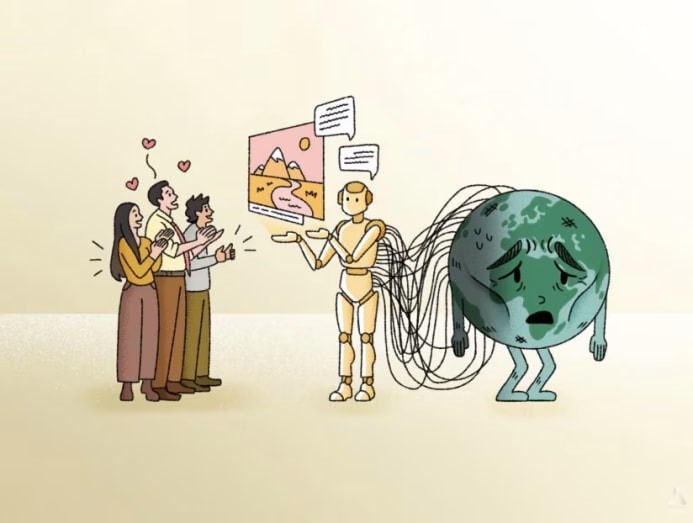Jumping on the Studio Ghibli AI trend? It's costing the planet more than you think
It might be exciting to watch generative AI produce anything with a simple text prompt, but the thirsty and energy-hungry tool comes at a large environmental cost that is expected to continue to grow.


This audio is generated by an AI tool.
For many people, artificial intelligence has already become a part of life, helping out with repetitive, menial tasks or quick research and generating everything from job application letters to funny memes. It has also made a big positive impact in several industries including healthcare, finance and technology, making it possible for people in these fields to innovate quickly and improve their services and offerings.
Yet, as the technology advances, its hidden costs are coming into sharper focus as well. In a two-part series, CNA TODAY examines some of these covert influences and how individuals, companies and governments may mitigate the adverse impact. This week, we explore how generative AI requires massive resources to drive its operations and growth, and how that is taking a massive toll on the environment.
ast weekend, social media was seemingly spirited away into the world of Studio Ghibli.
From everyday folk to governments, online users flooded the internet with images in the distinct hand-drawn style of films produced by the award-winning Japanese animation studio, including My Neighbour Totoro and Kiki’s Delivery Services.
However, rather than being hand-drawn, the images inspired by the animation studio were generated using ChatGPT, a generative artificial intelligence (AI) tool created by OpenAI.
In a post on X (formerly Twitter) on Mar 30, OpenAI’s chief executive officer Sam Altman joked: “Can y’all please chill on generating images. This is insane, our team needs sleep.”
Days later, he said on the same channel that a million users had signed up for ChatGPT in an hour – a feat that eclipsed ChatGPT’s record of drawing a million users in five days following its public launch two years ago.
Data from market research firm Similarweb showed that the viral trend drove a spike in ChatGPT use and that the average weekly active users breached the 150 million mark for the first time this year.
Studio Ghibli itself has not commented on the craze, but the trend has sparked fresh debate about copyright infringement.
Some critics have argued that it counts as an infringement when AI tools trained on copyrighted original works are used to generate images closely resembling the unique style of a particular artist.
In the midst of the debate, past comments made by Studio Ghibli's co-founder, animator and filmmaker Hayao Miyazaki that criticised AI have resurfaced and made their rounds.
For example, in a 2016 documentary called Never-Ending Man: Hayao Miyazaki, a group of developers showed him an AI-generated animation demo of a zombie that could be used for a video game.
After watching it, the filmmaker said: “Whoever creates this stuff has no idea what pain is whatsoever. I am utterly disgusted … I strongly feel that this is an insult to life itself.”

While the debate rages, there is another troubling effect of generative AI that has been relatively overlooked: Its environmental toll.
The International Energy Agency said that a single ChatGPT query submitted by a user requires 10 times the amount of electricity as a Google search – 2.9 watt-hours (Wh) compared with 0.3 Wh.
A study by researchers at Carnegie Mellon University in the United States and the machine learning platform Hugging Face found in 2024 that generating 1,000 images using several generative AI tools requires about 2.907 kilowatt-hours (kWh) on average.
This means that producing a single photo with generative AI can consume as much energy as fully charging an average smartphone, though this may vary depending on the capabilities and computing power required by the generative AI tool.
The energy required to generate text is typically less.
A study by the University of California, Riverside in the US found that a 100-word email generated by an AI chatbot using ChatGPT’s GPT-4 model requires 0.14 kWh. That is still enough electricity to power an LED light bulb for 14 hours.
The same email generated with GPT-4 uses 519 millilitres of water – slightly more than a bottle of water.







